Chickens make loud noises, which may make you wonder what message they are sending. These can include vocalizations that display emotions such as fear, pain, excitement, and more.
But do chickens cry or scream?
Chickens do not cry or scream in the same way humans do. Instead, they make chirping, murmuring, clucking, growling, and crowing noises, as well as specific sounds when they are alarmed, injured, or distressed.
Keep reading to learn more about the different types of vocalizations chickens make, what these sounds mean, and the context in which they are made.
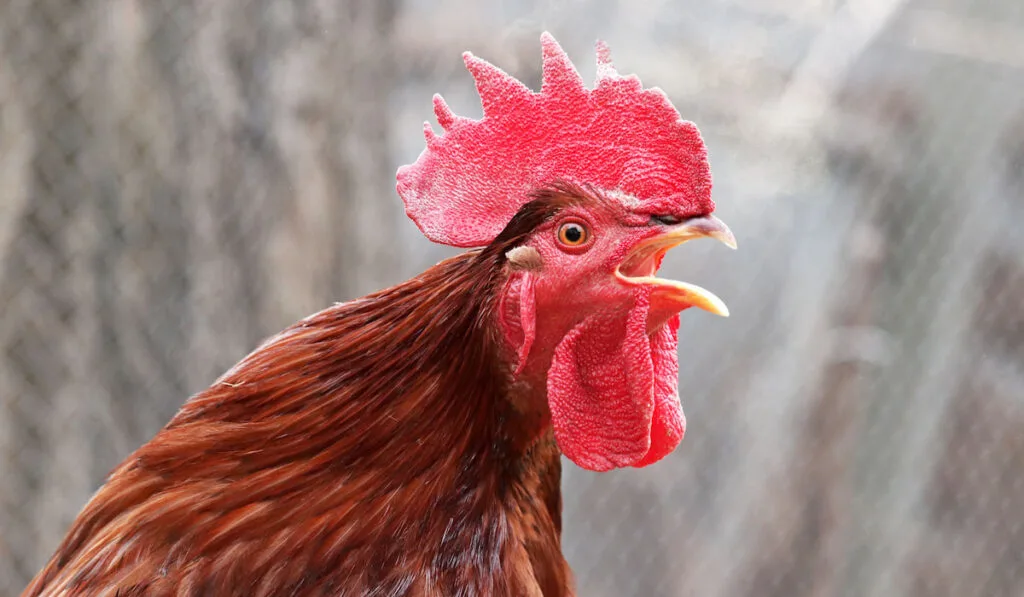
Table of Contents
Can Chickens Cry?
Chickens don’t cry. Instead, they make a variety of vocalizations, with some sounding like crying or screaming.
Though chickens don’t possess vocal cords as humans have, their vocalizations are created by various muscles that control the syrinx, a vocal organ exclusive to birds.
While chickens may not be able to produce tearful sobs, they can make a variety of similar sad sounds.
For example, a mother hen may emit a loud “scream” to call her chicks back to her if they wander too far away, sometimes even if they’re still in sight. The vocalizations can be pretty complex and convey a wide range of emotions, including fear.
Chickens make several other sounds when alone, in groups, or experiencing unique events.
What Sounds Do Chickens Make?
Chickens make a range of noises, including the following sounds:
Growling
Growling is a familiar sound chickens make when they feel threatened by a predator, another chicken, or even a person. The deep growl often shows dominance or expresses aggression.
Growling is also a way broody hens communicate the need to be left alone or respect their space and boundaries. This sound is often accompanied by fluffed-up neck feathers and a head bobbing motion.
Clucks
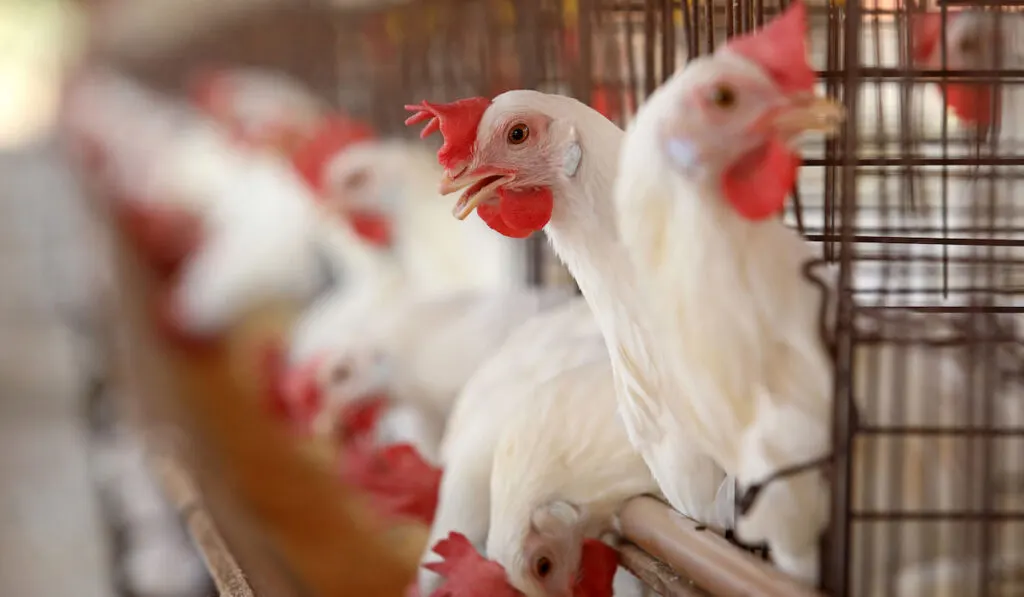
Signature clucks are also common among chickens. Clucks sound like a repetitive “buk-buk-buk” noise and are often short, repetitive vocalizations.
A cluck is a low, brief sound chickens make when anxious or curious. Clucking is a way for chickens to communicate and express themselves.
A chicken’s cluck can vary in pitch and volume depending on the situation, from soft, gentle clucks to loud, sharp clucks.
For example, a chicken may produce a loud cluck if it is alarmed or a soft cluck if it is content or relaxed.
A mother hen can also cluck when interacting with her chicks or even sitting on her eggs. This way, the chicks feel safer and relaxed, learning their mother’s sounds. Clucking soon after laying an egg may imply they are distressed.
Clucking is integral to a chicken’s language, and understanding its variation can help you better understand your flock.
Chirping
Chirping is a short, high-pitched sound ranging from a single note to a complex sequence of notes.
Chirping is a sound chickens make when they are stressed. For example, when a chicken spots a hawk, it can make a loud, rapid chirp to alert the other chickens.
Even so, chicks chirp rapidly when scared. Chicks can also send distress chirps when they are panicking or startled.
Chickens will also chirp when cold or hungry or looking for food or water.
Crows
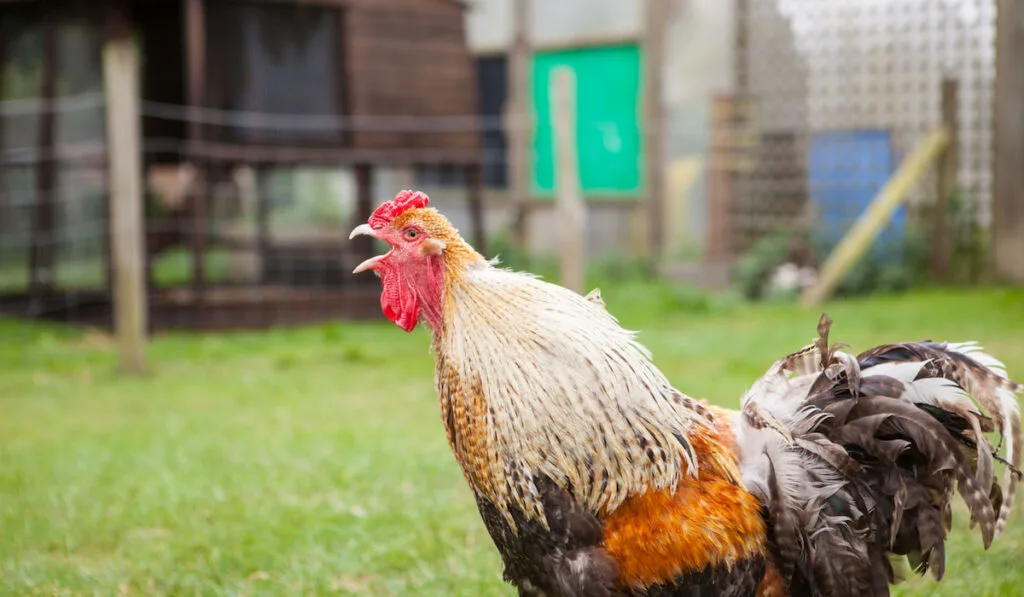
Chickens are known for making various sounds, but crows are among the most recognizable. Crows sound different from other chicken sounds and can be easily identified.
The sound of a crow is a loud, harsh, cawing noise that can carry long distances. The crow is often heard early in the morning and is usually a wake-up alarm for the flock to start looking for food.
Crows can also communicate territorial announcements or predator alerts. In addition, crows also help chickens find each other if they become separated.
Cackles
Chickens may sometimes produce loud and distinctive cackles. A cackle sounds like a series of loud, high-pitched notes, often with a repetitive pattern – something like “Kuh-kuh-kuh-kuh-KACK”
A cackle usually lasts for a few seconds, often followed by a series of clucks or a quiet chirp. A hen can make this sound when laying eggs.
Chickens cackle when communicating with other chickens. They can also cackle to show dominance, alertness or when there is danger.
Flapping wings and a jerky head movement often accompany a cackle.
Murmuring
Murmuring sounds are low-pitched vocalizations. Chickens can murmur when distressed.
Murmuring is one way chickens express their emotions, such as the need for safety and security.
Examples of murmuring can include a low-pitched cooing, clucking, or a soft trilling sound.
Murmuring is often accompanied by soft clucking and gentle purring.
Roosting Calls
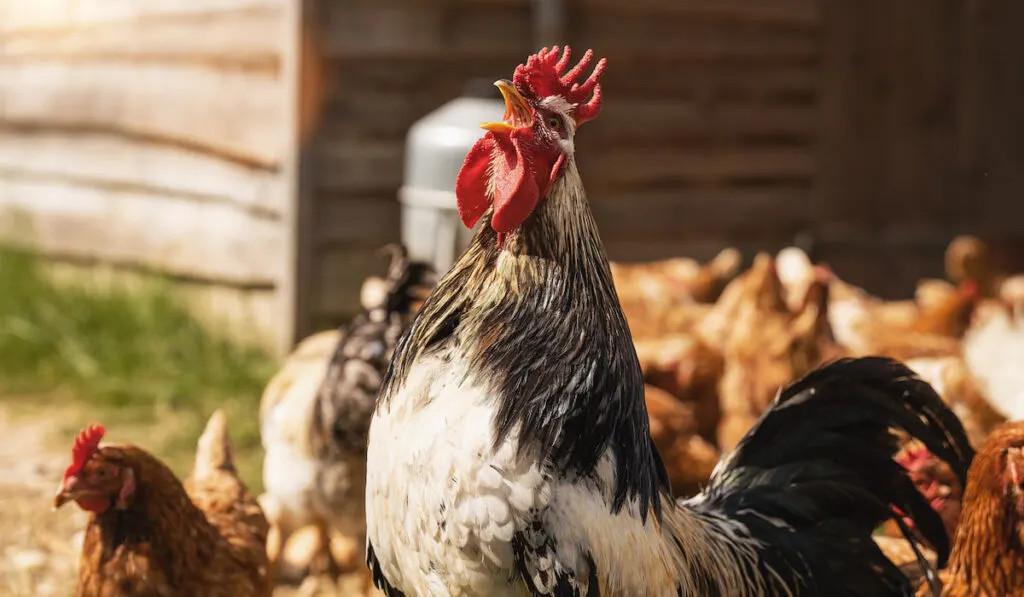
Roosters usually make a roosting call when chickens are settling in to roost. It’s a loud, “cock-a-doodle-doo” like sound that can be heard from a distance.
Roosting calls are usually made in a series of short calls, almost like a chant. Sometimes, roosting can sound like screaming and gurgling.
Roosters can make this sound when they sense a threat. The call alerts other chickens that they are in their roosting spot.
Roosting calls also reassure the flock as they feel safer knowing other chickens are nearby.
Lonely Call
Another familiar sound that chickens make is the lonely call. This call is a plaintive, drawn-out “cluck.”
Lonely calls are usually made when a chicken is separated from its flock. It’s a way to call out to the other chickens to let them know where it is.
The call can also express hunger or a desire to be with the other chickens.
Examples of this call can be heard in the early morning or late evening when the chickens are looking for their flock.
Squawking
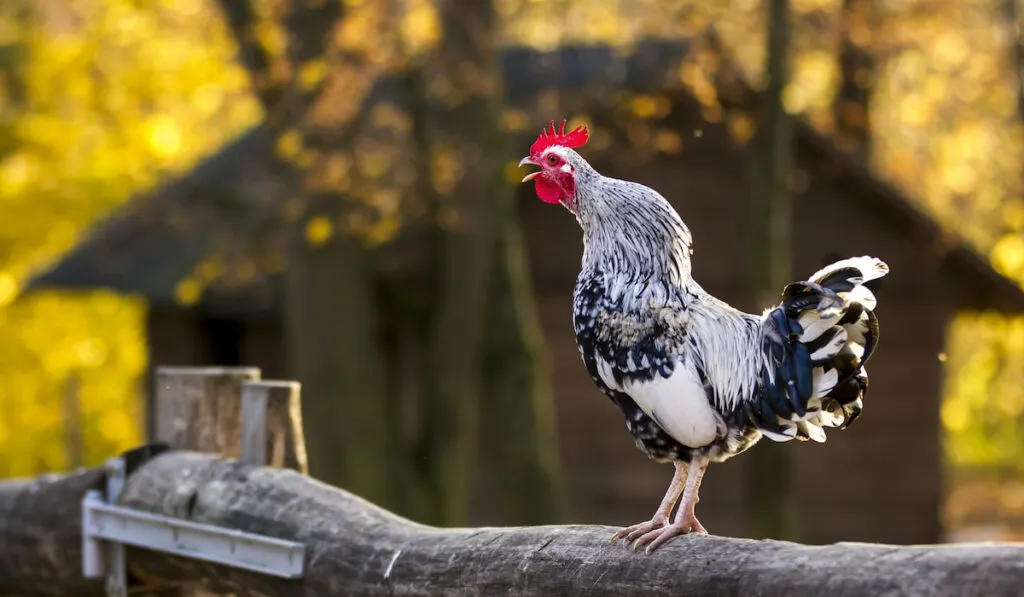
Squawk is a sign of distress and fear. It’s a type of distress call that chickens make when injured or ill. This is usually a loud and sharp sound.
The sound is a warning call that alerts other chickens of potential danger. It is also used to communicate with other chickens and can be heard from quite a distance.
Even so, chickens can produce a loud and high-pitched scream when captured and separated from the flock. This indicates that they are feeling threatened or scared.
This sound warns other chickens that something is wrong, and they should flee the area.
Summary
While chickens may not show their emotions through crying or screaming, they have a language. Their ability to communicate is reflected in the different sounds they make.
If you keenly watch their interactions and listen to their conversations, you’ll hear them chirp, murmur, growl, cluck, or squawk.
It’s important to note that different sounds communicate different messages or emotions. Learning to differentiate the unique chicken sounds and patterns can help you monitor the flock’s productivity, mood, and overall health.
